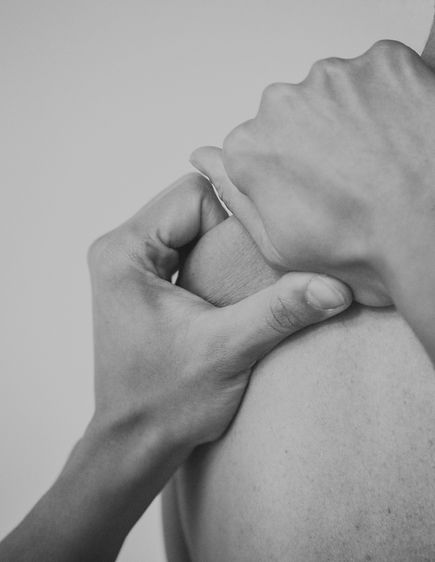
Effleurage (stroking)
The hands are passed rhythmically and continuously over a client's skin, in one direction only, with the aim of increasing blood flow in that direction, stretching tissues, relaxing the client and aiding the dispersal of waste products.
Petrissage (Kneading)
The skin is lifted, pressed down and squeezed, pinched and rolled. Alternate squeezing and relaxation of the tissues stimulate the local circulation and may have a pain-relieving effect with some muscular disorders.


Tapotement (Percussion)
Includes hacking, clapping, beating, pounding or vibrations.
Deep friction (Cross friction)
Involves applying deep pressure and friction perpendicular to the direction of the tissue fibres. The purpose is to maintain the mobility within the soft tissue structures of ligament, tendon, and muscle, and prevent adherent scars from forming.


Soft tissue release (Pressure, stretching & movement)
A combination of pressure, stretching, and movement is applied to target areas of tension or adhesions within the muscles and connective tissues. It is beneficial for relieving muscular tension, stiffness, or restricted range of motion due to factors such as poor posture, overuse injuries, or chronic stress by promoting relaxation, improving circulation, and restoring balance to the musculoskeletal system.
Myofascial release techniques
(Skin rolling & stripping)
Fascia is located between the skin and the underlying structure of muscle and bone, and connects the muscles, organs, and skeletal structures in our body. Manipulation to release fascia that has become restricted through injuries, stress, trauma, and poor posture.


Trigger pointing
(Targeted relief)
Applying pressure to tender muscle tissue to relieve pain and dysfunction in other parts of the body. Trigger points are active centres of muscular hyperactivity, which often cross-over with acupuncture points.
Muscle energy techniques
(Release therapy)
The muscle’s own energy is used with gentle isometric contractions to relax and lengthen the muscle and improve range of motion in joints. It is an effective preventative measure to guard against future injury.
